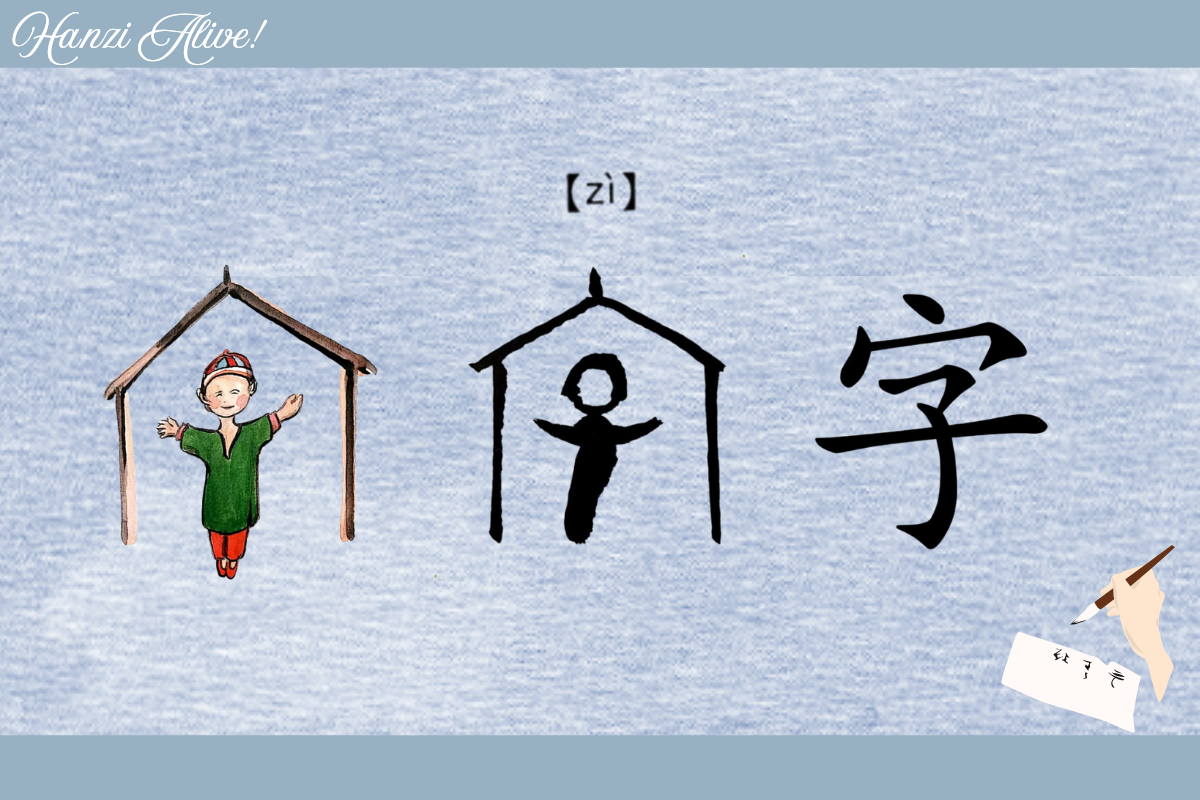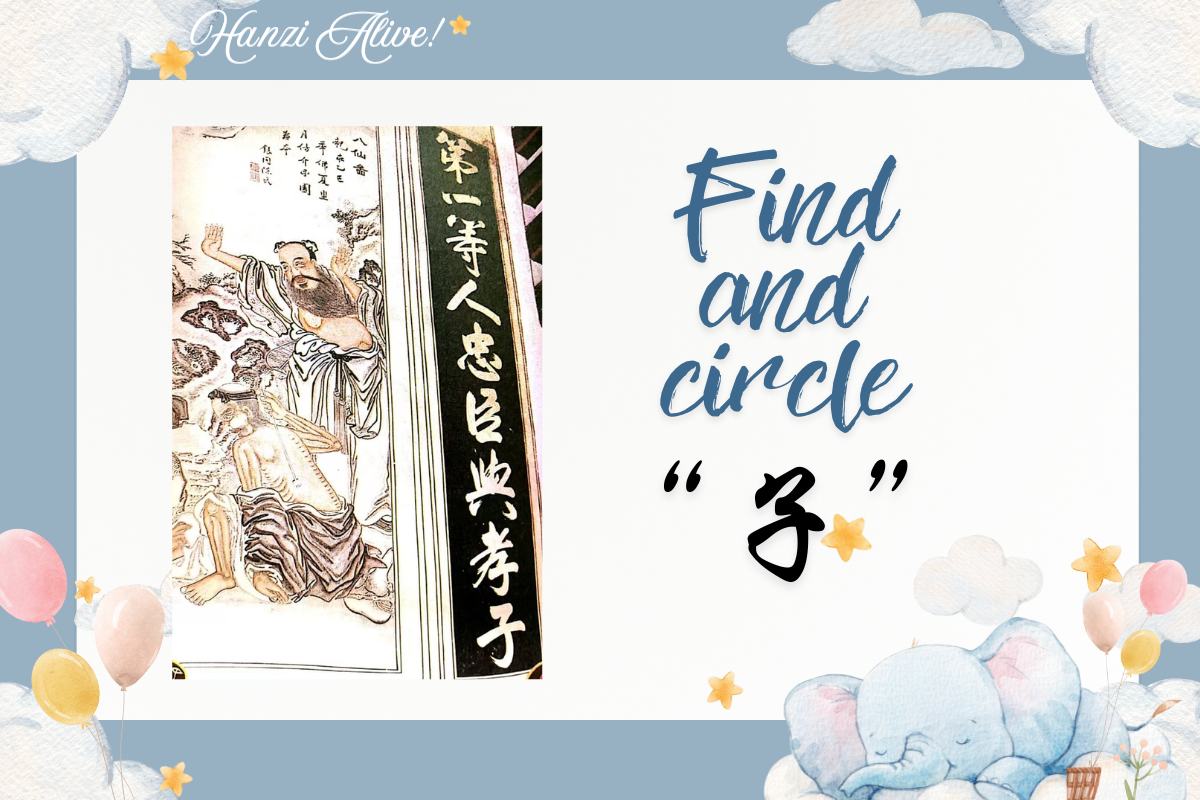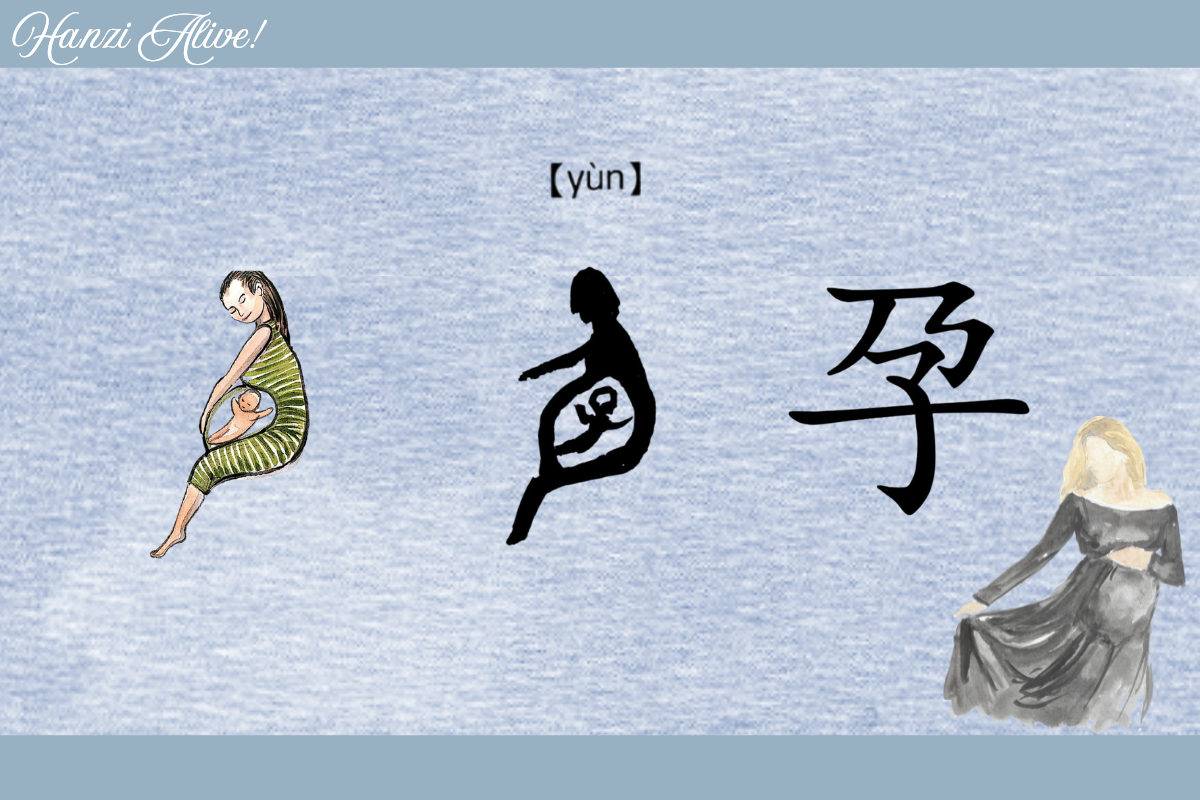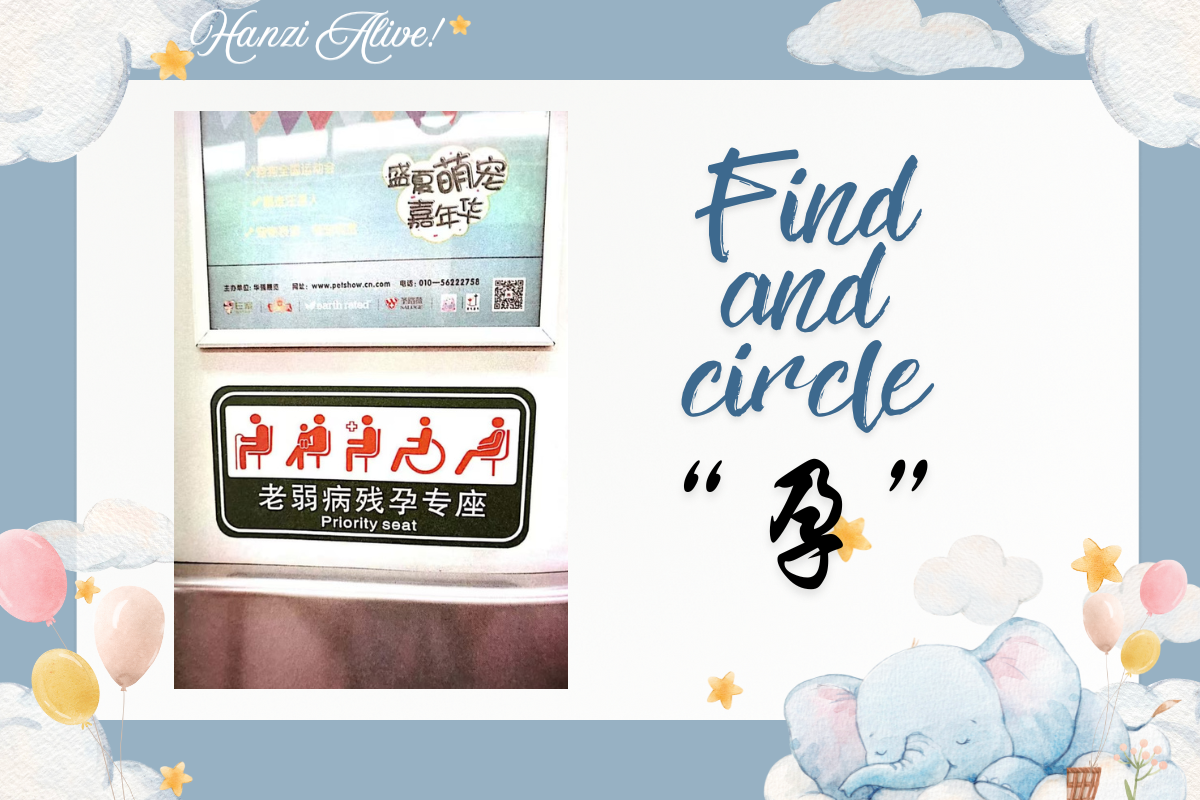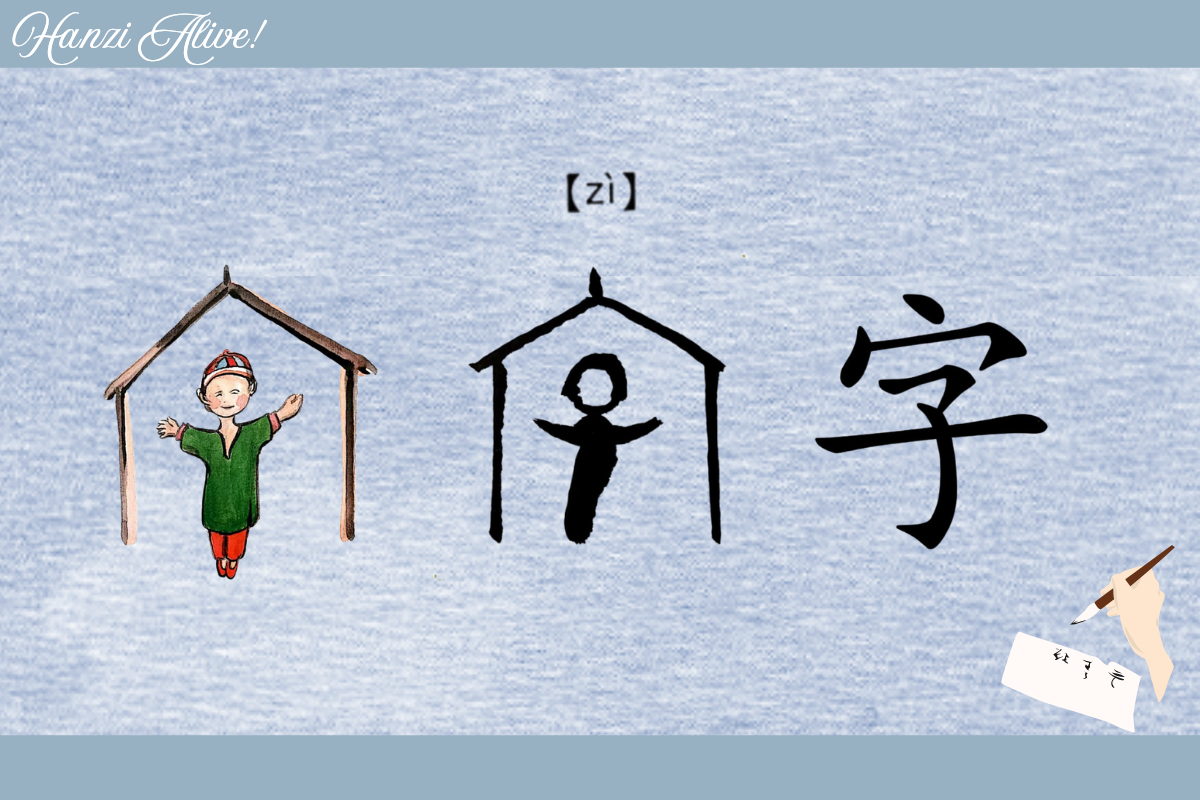Hanzi Alive!(15)
Chinese characters are the cradle of life - '子' (zǐ) is a baby waving its arms, '孕' (yùn) is the expectation of new life in the womb (子 + 乃), '字' (zì) is teaching children to read under the roof (宀 + 子). These three characters embody the gentle expression of inheritance in Chinese culture.
子 (zǐ)/(zi)
Explanation:
- Just like the character "好" introduced before, "子" means "baby." It visually resembles a baby wrapped in a blanket, representing warmth and safety.
Example:
- The child is playing in the park.
孩子在公园里玩耍。
hái zi zài gōng yuán lǐ wán shuǎ. - This chair is very comfortable.
这把椅子很舒服。
zhè bǎ yǐ zi hěn shū fu.
Find and circle "子" in the image:
孕(yùn)
Explanation:
- The character "孕" portrays a woman with a big belly, symbolizing pregnancy and the anticipation of new life.
Example:
- She is five months pregnant.
她怀孕五个月了。
tā huái yùn wǔ gè yuè le. - Pregnant women need more rest.
孕妇需要多休息。
yùn fù xū yào duō xiū xi.
Find and circle "孕" in the image:
字(zì)
Explanation:
- A baby is born in a house, represented by the character "字". Originally meaning "to give birth," it now signifies "a word," symbolizing the act of learning to write words at home.
Example:
- This Chinese character is easy to write.
这个字很容易写。
zhè ge zì hěn róng yì xiě. - Please write your name here.
请在这里写下你的名字。
qǐng zài zhè lǐ xiě xià nǐ de míng zì.
Find and circle "字" in the image:
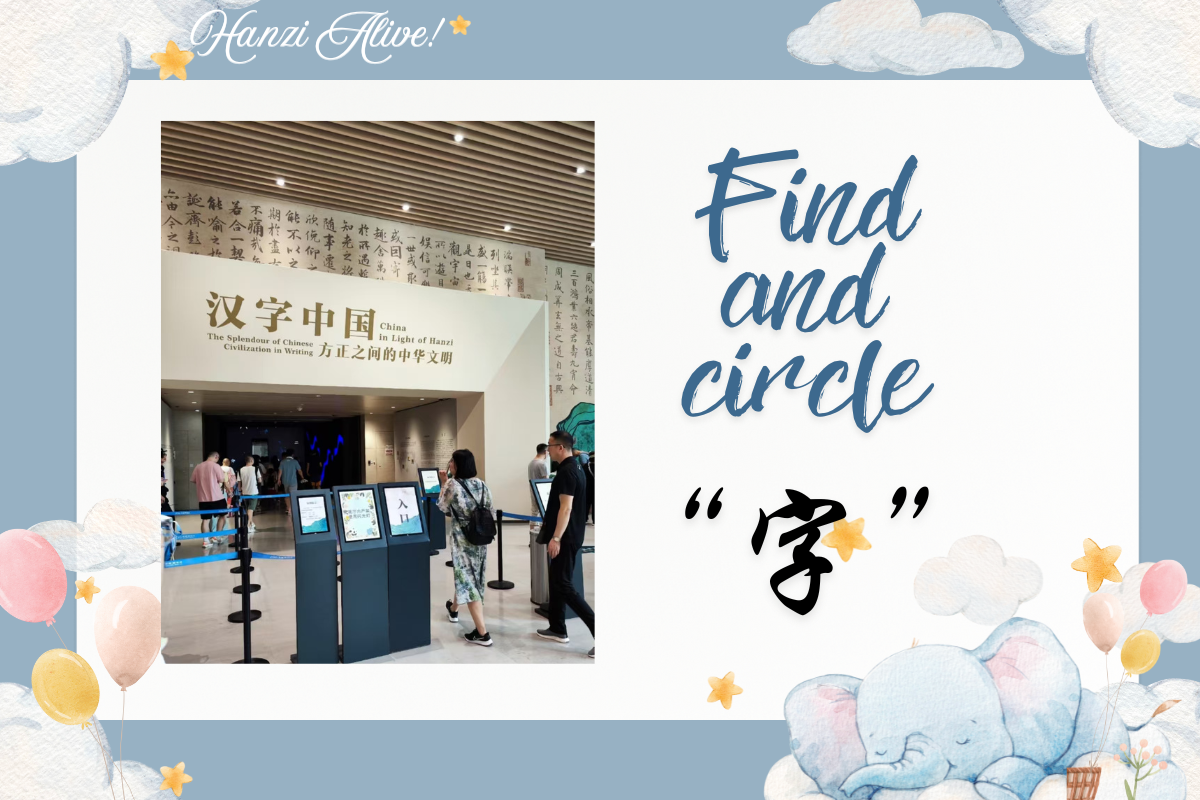
Now you've touched the heartbeat of Chinese characters: from the birth of '子,' the expectation of '孕,' to the heritage of '字,' each stroke tells an endless story. This is why - what we write is not mere symbols, but the life's cycle.
